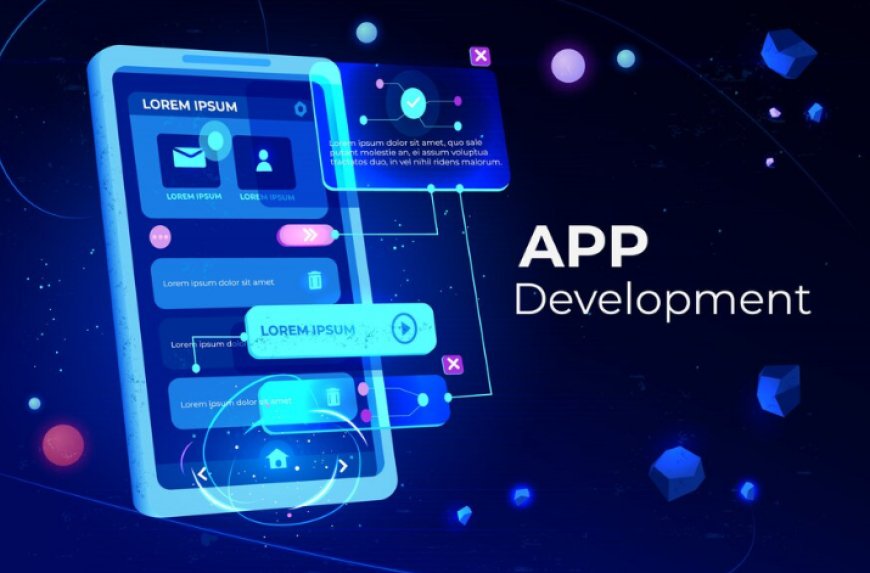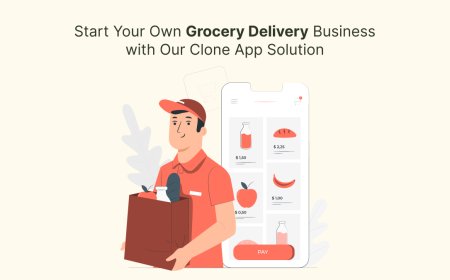Mastering Mobile App Development: A Strategic Guide for Businesses
Understand how to strategically plan and execute mobile app development for business success, covering every critical stage from idea to launch.

Mobile apps have moved from convenience to necessity in today's digital economy. Whether youre a retailer, a service provider, or an enterprise organization, offering a mobile app can drastically boost customer experience, retention, and profitability. However, success depends on more than just having an ideait requires following a defined strategy.
In this post, Mobile App Development Guide, well walk through the strategic considerations that every business should make before, during, and after building an app. Whether you're working with an in-house development team or outsourcing, this guide will help you stay focused on goals and quality.
Define Your Core Objectives
Every successful app begins with clarity. Ask yourself:
-
What problem does this app solve?
-
Who is your target user?
-
How will it support business goals?
Whether it's driving sales, improving engagement, or offering convenience, defining success metrics early helps align your team and keep development purposeful.
Conduct Market and User Research
Understanding your users needs and analyzing competitor apps provides essential direction:
-
What do users expect from apps in your category?
-
Where are competitors falling short?
-
What features could set you apart?
Research allows you to avoid building unnecessary features and focus on what truly matters to your users.
Choose a Scalable Technology Stack
Your apps backend and development framework will impact scalability, security, and performance. Consider:
-
Cross-platform tools like Flutter or React Native for faster deployment
-
Cloud-based backends such as Firebase or AWS
-
APIs and integration tools to connect your app with CRM, payment systems, or analytics
Choosing the right stack ensures the app performs well both now and in the future.
Prioritize User Experience (UX)
Great UX is about more than aesthetics. Its about making the app easy and enjoyable to use. Key elements include:
-
Logical user flows
-
Simple navigation
-
Speed and responsiveness
User testing is vital hereget feedback on early wireframes and prototypes to catch issues before development begins.
Design a Compelling User Interface (UI)
UI brings your app to life. It should reflect your brand while staying clean and consistent. Focus on:
-
Visual hierarchy (what grabs attention first)
-
Intuitive design patterns (what users expect)
-
Consistency in fonts, colors, and buttons
UI design affects first impressions, which can make or break user retention.
Develop in Phases: MVP First
Rather than build every feature at once, launch with a Minimum Viable Product (MVP). This version:
-
Includes only core features
-
Allows early user testing
-
Helps you validate assumptions before scaling
You can then roll out advanced features in updates, based on real feedback.
Quality Assurance and Testing
Thorough testing is critical. It ensures your app works across different devices and use cases. Include:
-
Unit testing for small components
-
Integration testing for data flow
-
User Acceptance Testing (UAT) to evaluate real-world usability
Dont rush this stepit can make the difference between a 5-star rating and app store rejection.
Post-Launch Monitoring and Updates
Launching your app is just the beginning. Monitor:
-
Crash reports
-
Session duration and user paths
-
Feature adoption and churn
Use these insights to improve future versions. Continuous improvement keeps users engaged and increases retention over time.
Keep Your Strategy Agile
Technology and user expectations evolve quickly. Make sure your mobile app strategy is flexible. Conduct regular reviews, track new trends, and be ready to adapt. Success in the app space comes from being responsive, not rigid.
Final Thoughts
Strategic planning is the backbone of any successful mobile app. Without a clear roadmap, apps can become bloated, buggy, or misaligned with business goals. But when strategy drives design, development, and iteration, the result is a powerful tool that delivers results.
Use this Mobile App Development Guide as your strategic frameworkplan wisely, build smartly, and always keep the user at the center.
























